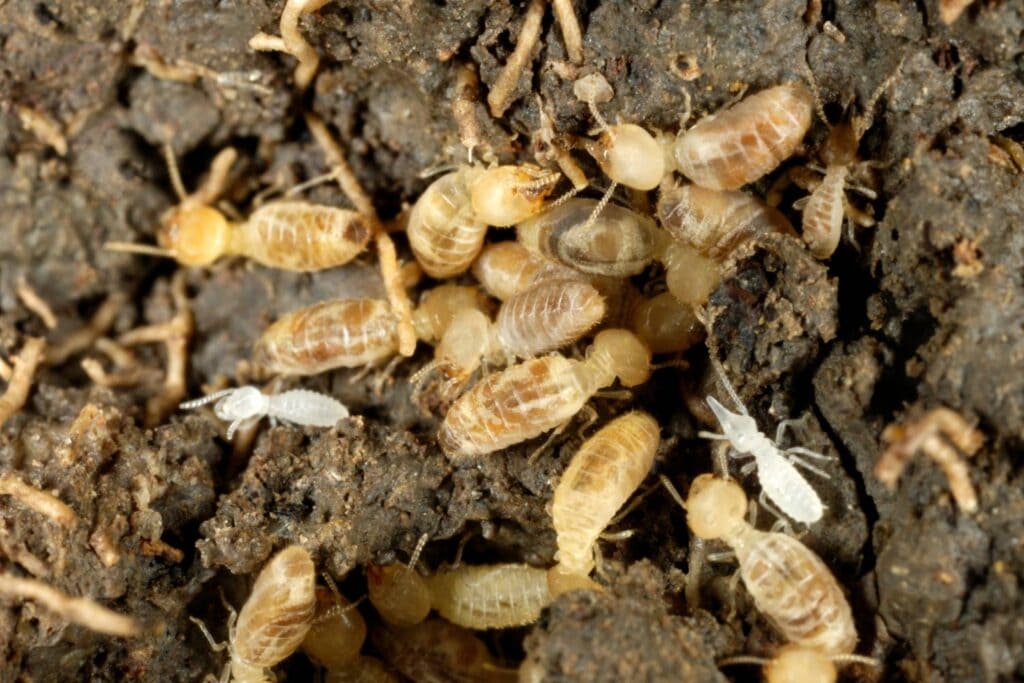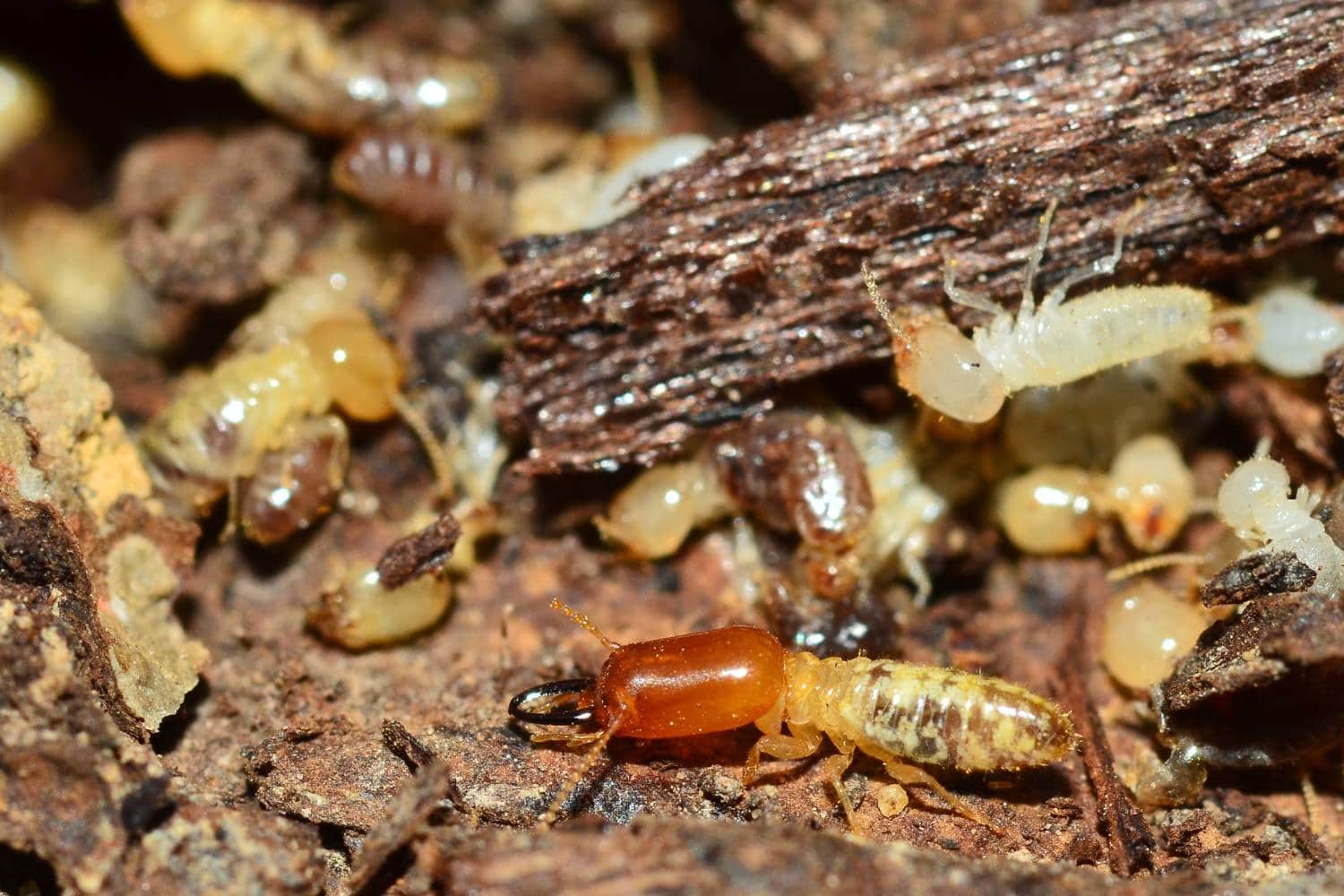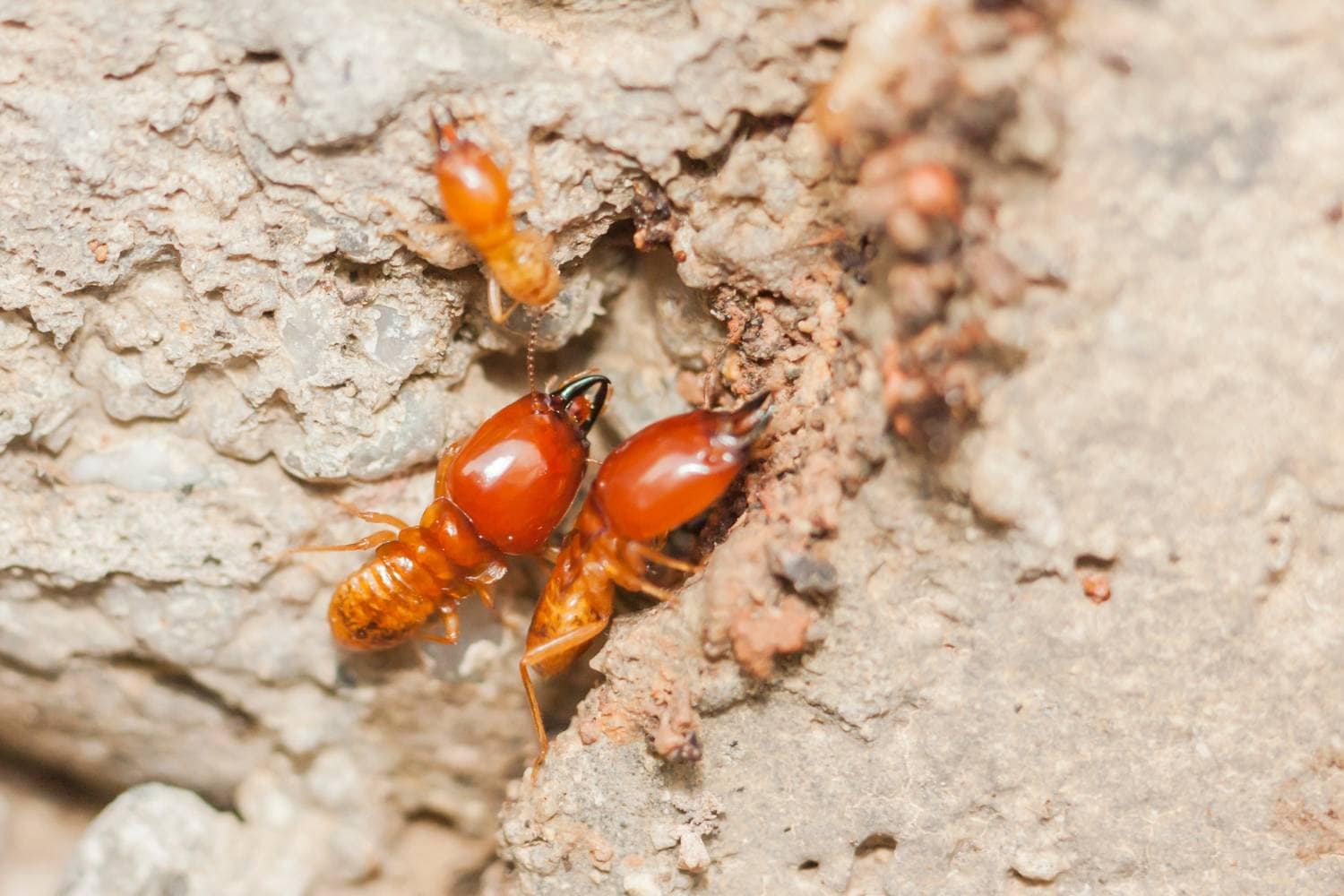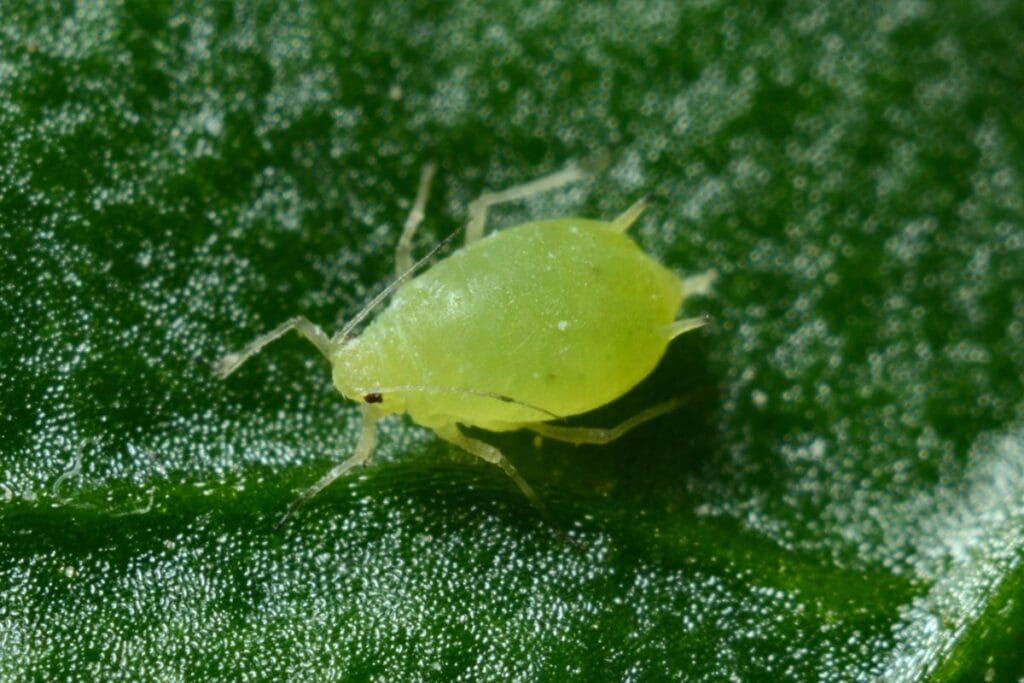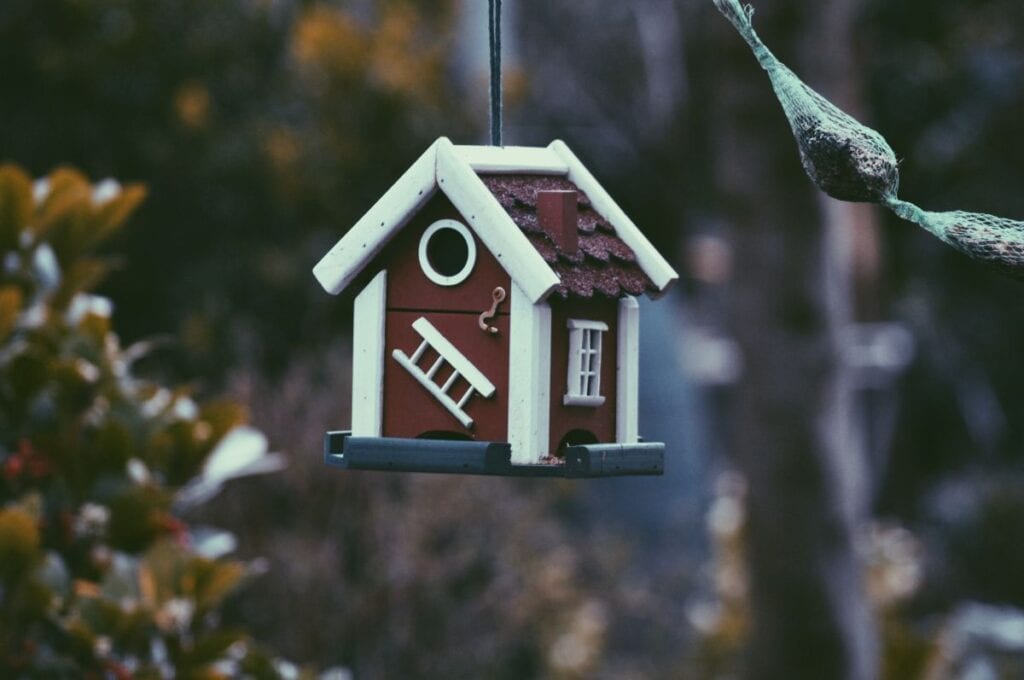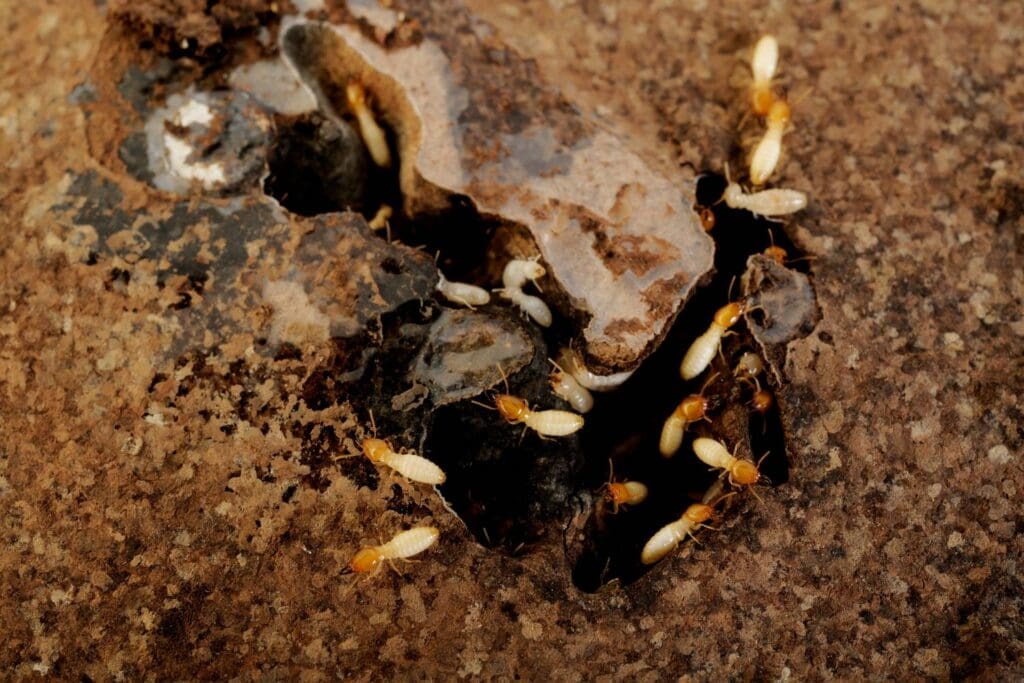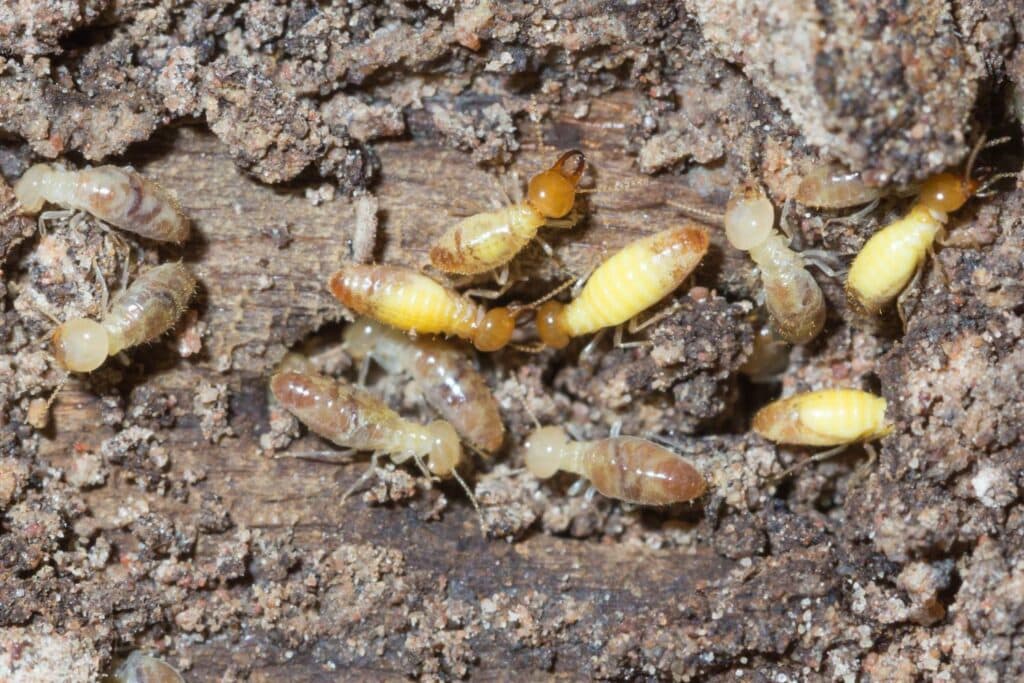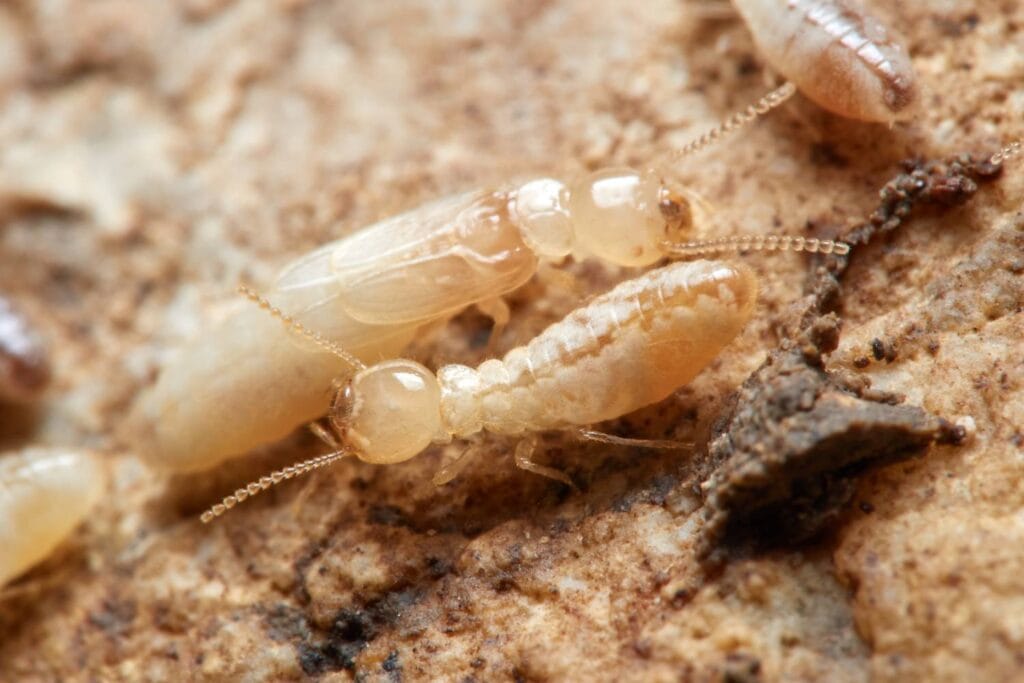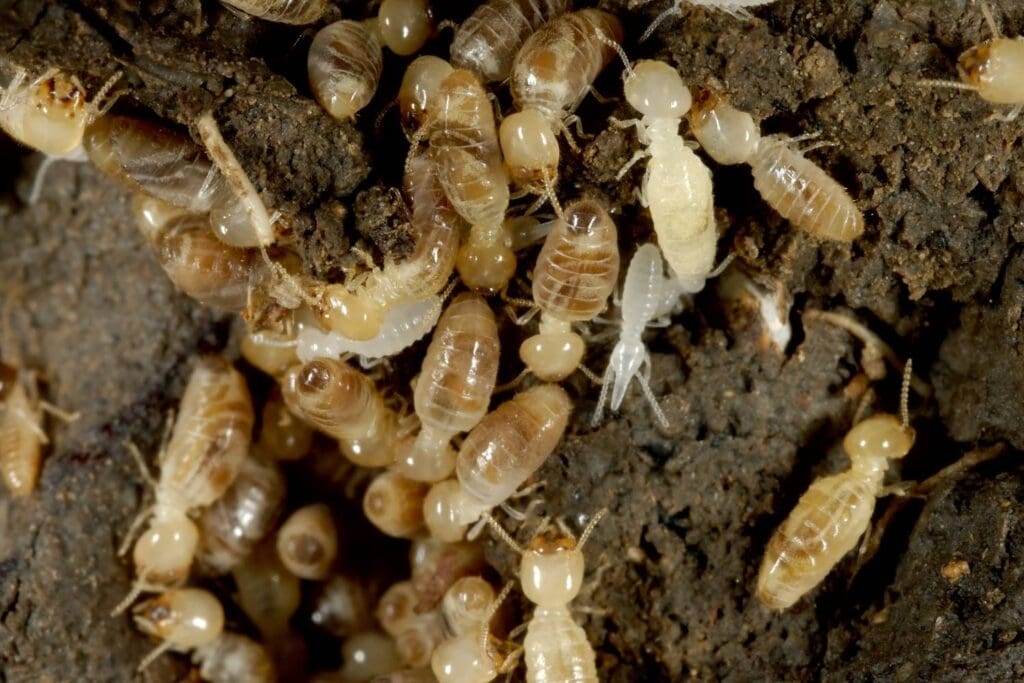This guide aims to give homeowners a better understanding of what is involved in termite inspections and treatments to address common questions regarding termites, such as what they look like, how much it costs to get rid of them, and how much an inspection costs.
Don't hesitate to contact us as soon as possible if you suspect a threat to your home or if you discover what seems to be termites. Many physical and chemical pest management approaches, including barriers and traps, are available.
Termite Inspection: What Is It?
To detect termites or their damage, a termite inspector will visually examine the accessible portions of a house or structure. Termite inspections also involve finding potential termite breeding grounds. In such a situation, we will advise you on how to keep your home as free of termites as possible and give you advice on how to prevent them. Typical regions that are examined include:
- Edges of outside walls and building perimeters.
- Outside landscaping, fencing, and yard trees and stumps.
- Underneath structures or houses.
- Rooms within, such as door frames and skirting boards.
- Voids on the roof can be accessed.
Where Should We Look?
Our professionals will search for evidence of termite activity and any damage that termites may have done in the past or present during a termite inspection.
Garden beds, spaces surrounding hot water units, bathrooms, and kitchens are all possible termite attack hotspots because of the dampness and damp conditions they provide.
A professional exterminator can frequently find termite damage long before the homeowner notices a problem since they are trained to recognise the telltale symptoms of the pests.
Which Tools Are Utilised?
By Australian requirements, we are required to use the following tools:
- "Moisture Scan Tool" by Tramex, "Moisture Encounter Plus"
- Trumpet stick (Dinger instrument)
- A tool for driving screws
- Torch
To ensure they check every inch of the house for termite indications as soon as possible, they typically employ a combination of these tools and more.
Instruments for Termite Inspection and Their Application
The equipment utilised by our qualified pest control technicians to diagnose and identify potential termite infestations is briefly described below.
Thermal Imaging Cameras
Termite testers must have thermal imaging cameras, also called infrared cameras. These cameras are very expensive but necessary for their job. Termites or active water leaks can cause wetness or heat to get through walls; these tools use a heatmap signature to help us find them. Because these thermal imaging termite inspection cams have a screen, it's easy to find places that need more research.
Termatrac Motion Sensors
This hand-held device sends information about moving back to another device, like a cell phone does. There will be an alarm if even a few ants are in the wall.
Bug-Eye Termite Scope Camera
After we locate potential problem locations utilising the instruments above, we will use a bug eye termite scope camera to verify our initial findings. We must make a pencil-sized hole in the wall to insert the camera, making this inspection method more invasive. Not only can we see the termites in the wall with our own eyes, but we can also show this to our consumers.
How Do You Get Rid Of Pests?
Pest control means taking care of unwanted insects, rats, and other unwanted animals unwanted animals and stopping them from hurting plants, buildings, and other things.
Controlling Pests Methods
The management of pests is achieved via a variety of techniques and procedures. These techniques and methodologies consist of the following, among others:
inspection,
cleaning,
entanglement, and
Chemical insecticides.
Experts in pest management employ a toolbox of methods to keep unwanted visitors at bay, and they modify their strategy based on the kind of pests they're up against. Biocontrol agents, including predators, parasites, and diseases, may occasionally be used in pest control.
Having a professional security company protect your property from human invaders is easy, but preventing bugs is an entirely different story. Pest management is crucial because bugs can infest homes, taint food supplies, and cause structural damage. Regarding pest control, different kinds of pests call for different approaches.
What Do Pesticides Do?
Pesticides are chemicals that are used to get rid of or control pests. Including herbicides, insecticides, and fungicides in the word "pesticide" So that bugs, fungus, and weeds don't hurt crops, pesticides are used to kill them.
Common Insects That Can Infest a Business
Some common bugs that come into homes and businesses are:
- Squirrels and birds
- Ants and cockroaches
- Wasps and bees
- Fleas and flies
- Rats and mice
- Bed bugs
Would You Prefer an Inspection for Pests or Termites? How Are They Different?
It doesn't matter if you are buying a new home or already own one; you have probably heard of Pest Inspections or Termite Inspections. What's the difference between these two very important things?
Inspections for pests
The primary distinction is that pest inspections, sometimes known as timber pest inspections, are utilised as pre-purchase inspections. This should be included in your due diligence when purchasing a property. The Check addresses a variety of wood pests that harm the wood in and around your home. These vermin are:
- White rot
- Mould
- Brown rot
- Wood Borers
- Soft rot
- Common Furniture Beetle
- House Longhorn Beetle
- Powder Post Beetle
- Termites
- Wood Decay Fungus
Pest inspections do not cover common household pests like rats and cockroaches, despite what the name may imply.
Termite Inspections
Termite inspections are something we advise all of our clients to get done once a year. A foraging termite infestation can be prevented with yearly inspections. This bug is specifically designed to eliminate termites, as the name implies.
Pest And Termite Inspections Include What?
A Third-Party Evaluation
Search for evidence of wood-boring pests (including termites) in and around the house. Termites can burrow up to fifty yards, which encompasses the property's boundary. Anything made of wood, including gardens, trees, fences, and retaining walls. To reduce your termite danger factor, it is necessary to remedy or remove any conducive settings.
Inspections of the Subfloor
This checks for signs of excessive moisture, indicating termites or wood rot.
Checks Conducted Within
Encasing all of the wood components within. Regarding pests like termites, a thermal imaging camera is an absolute must.
How Often Should You Get Your Home Checked For Termites?
Everyone in Australia knows that termites are among the worst pests. However, some people need to learn how often they should have termites checked. Australian Standards say that it should be done at least once a year.
Even though this is a good rule of thumb, you may need more frequent visits based on where you live, if you have had termites in the past, and your neighbours. Also, you will need a termite check if you want to buy or sell a house.
The Current Owners, Tenants, and Families
Termite inspections should be done annually, according to most pest control businesses. This is because of the hot and humid weather that we get here in Australia.
Soil conditions ideal for termites are produced when very high temperatures and high moisture levels are present. The question is, how frequently should you have a termite inspection?
A Brief Overview of Termites
The rules above do not apply in all cases. Have you ever lived or worked in a place where termites have been found without any physical barrier? If that's the case, you must establish a termite management system and have a termite inspection every six months (regardless of region). There is no surefire way to keep termites out unless you set up some physical or chemical barrier.
Do you already have a chemical shield that is almost done its job? You might need a trained professional to replace the shield with new chemicals. If not, the old method won't work, and termites will enter the house.
Does a friend in the area have a history of termites? If so, your home might be the next one they take. This is why you need to schedule a termite check right away. They can fully check your home or business and make a custom termite plan for you if they find a risk.
Purchase and Sale of Real Estate
It is strongly recommended that you obtain a pest and timber inspection before you put your house on the market. You and any prospective purchasers will learn about the following:
- The history, present, and future of insect problems in the structure.
- System for managing termites, whether implemented in the past or present.
- Verification of damaged wood.
- Plumbing problems.
- Recommended treatment choices.
You can enhance the building's state by fixing and modifying this information. Your sale price will increase, and the purchasers' minds will be at ease. You could bring in a larger number of customers altogether.
A pre-purchase examination can be arranged if you intend to buy and the seller has yet to undergo one. In the same vein as before, this inspection will check the entire structure for signs of pests and damage to the wood and provide maintenance advice. After you have this data, you may utilise it to your advantage to get a better offer or back out of the sale altogether.
When Is The Best Time To Control Pests?
Is there a certain time of day when you should get rid of pests in and around your house? Right now is when you should apply pesticides. The best action is to protect your property at all times, regardless of the season, because pests can invade at any time.
There is never a good or bad moment to contact a pest control service; it is one of the most important things you should know. At certain times of the year, various pests are most active. You can create a year-round pest management strategy if you know what kinds of pests are likely to invade your home.
Your home's location, the kind of pests you have, and the length of time since your last appointment will determine how frequently you need to call a pest control service each year. Depending on your specific circumstances, longer or shorter durations may be suggested.
Since no two insect infestations are identical, no two treatments will work for everyone. This is why hiring experts who are well-versed in the various pests and how to eliminate them is important. You can use one of several treatment methods to keep pests out of your house.
Is Spring the Ideal Time to Apply Pesticides?
Spring is one of the greatest seasons to take care of pest control around the house. This is because pest activity resumes when temperatures rise. Even city dwellers can be considered pests. Since most pests hibernate over the winter, it becomes more difficult to trace infestations.
During September through November, bugs are most active and prepare to deposit their eggs. Pests like ants, cockroaches, rodents, spiders, and termites prefer warmer and more humid environments for their reproductive processes.
Termites and other pests are very sensitive to timing. They may quickly and extensively damage a structure, making them one of the most damaging pests. As spring arrives, termites become more active. Because of this, you should remain vigilant against them at that period.
Contact a pest control agency to avoid pest infestations in spring and throughout the year. Make an appointment for an inspection before the pest problem escalates into an infestation.
Conclusion
Homeowners need to get termite exams to find and stop termite infestations. They involve looking at parts of a building that can be reached physically, like the outside edges of walls, landscaping, fencing, yard trees, underground structures, rooms inside, and roof voids.
Professional pest control experts can spot termite damage long before the homeowner does because they know how to spot the pests' clear signs.
According to Australian law, you need to use tools like the Moisture Scan Tool, the Moisture Encounter Plus, and a torch. Termite testers use bug-eye termite scope cameras, thermal imaging cameras, and termatrac motion sensors to find places where problems might happen. Pest control means getting rid of bugs, rats, and other animals that you don't want by inspecting, cleaning, entangling, and using chemical poisons.
There are different kinds of pesticides, such as herbicides, insecticides, and fungicides. Birds, ants, bees, fleas, rats, mice, and bed bugs are some common insects that can get into homes and businesses. Pest checks are done before a house is bought. They look for wood-eating bugs like termites, white rot, mould, brown rot, wood borers, soft rot, common furniture beetle, house longhorn beetle, powder post beetle, and wood decay fungus.
Termite checks should be done once a year to keep foraging termites from taking over. There will be a review by a third party, as well as inspections of the subfloor and the house itself. For termite checks, thermal imaging cameras are a must.
There are a lot of termites in Australia, and you should have your home checked for them at least once a year. But the number of times may change based on where you live, if you've had termites before, and how close you live to termites. Due to the hot and humid weather, most pest control companies suggest checking once a year.
If you've lived in a place with no physical barriers, you should get rid of termites and have your home inspected for them every six months. If you already have a chemical shield, you might need to add more chemicals to it. If you know someone who has had termites in the past, set up a termite inspection right away.
If you are selling or buying a house, you should get a pest and timber check to find out about past, present, and future insect problems, as well as the management system, damaged wood, and plumbing problems, and suggest ways to fix them. This knowledge can help improve the building's condition, bring in more customers, and raise the price of its sales.
There is no set time of year to get rid of pests, but it is important to keep your property safe all year long. Knowing what kind of pests you have and what they like to do can help you come up with a plan to get rid of them all year.
When temperatures rise in the spring, pests start to move around again, making it a great time to get rid of them. For reproduction, termites, ants, cockroaches, mice, spiders, and termites like warmer and more humid places. To avoid bug problems in the spring and throughout the year, call a pest control company and set up an inspection before the problem gets worse and turns into an infestation.
Content Summary
- Immediate contact is recommended if there's a suspicion of termite presence in a home.
- Various physical and chemical methods are available for pest management.
- Termite inspections involve examining a house or structure for termite presence or damage.
- Inspections also seek out potential termite breeding grounds.
- Typical inspection areas include outside walls, landscaping, under structures, and internal rooms.
- Termite inspectors look for current or past termite activity and damage.
- Damp areas like bathrooms and kitchens are considered hotspots for termite attacks.
- Tools used in inspections include moisture metres, sounding sticks, and thermal imaging cameras.
- Thermal imaging cameras detect wetness or heat through walls, indicating termite activity.
- Termatrac motion sensors and Bug-Eye Termite Scope Cameras are also used for detection.
- Pest control involves managing unwanted insects and animals to prevent damage.
- Pest management methods include inspection, cleaning, entrapment, and chemical insecticides.
- Different pests require different pest control approaches.
- Pesticides are chemicals used to kill or control pests, including herbicides and insecticides.
- Common pests include squirrels, birds, ants, cockroaches, wasps, and bed bugs.
- Pest inspections, distinct from termite inspections, are recommended during property purchases.
- Pest inspections cover wood pests like rot, mould, wood borers, and termites.
- Termite inspections are advised annually to prevent termite infestations.
- Both pest and termite inspections involve checking for wood-boring pests and structural damage.
- Australian Standards recommend termite inspections at least once a year.
- The frequency of inspections may vary based on location, past termite activity, and neighbourhood conditions.
- Physical or chemical barriers are essential for termite prevention.
- Regular inspections and potentially replacing chemical barriers are crucial for ongoing protection.
- Termite checks are also crucial if neighbours have experienced termite problems.
- Before selling a property, obtaining a pest and timber inspection is strongly recommended.
- These inspections inform both sellers and buyers about pest issues and termite management systems.
- The condition of the building can be improved based on inspection findings, affecting sale price and buyer confidence.
- Buyers should consider a pre-purchase inspection for detailed pest and damage assessments.
- The best time for pest control is immediately, regardless of the season.
- Pests can invade at any time, making year-round pest management essential.
- The frequency of pest control services depends on location, pest type, and the time since the last service.
- Treatment methods vary based on the specific pest infestation.
- Professional expertise is vital for effective pest identification and elimination.
- Spring is an optimal time for pest control due to increased pest activity and rising temperatures.
- Most pests become active in spring, laying eggs and preparing for reproduction.
- Termites, especially, become more active in spring, posing significant risks to structures.
- Vigilance against termites is crucial in spring to prevent extensive damage.
- Contacting a pest control agency in spring can help prevent infestations.
- Annual inspections can avert pest problems from escalating into infestations.
- Homeowners should stay informed about pest and termite control strategies.
- Implementing preventive measures can save significant costs on pest damage repairs.
- Understanding the tools and methods used in inspections can help homeowners in discussions with professionals.
- Recognising early signs of pest activity can lead to quicker interventions.
- Comprehensive pest management includes both preventive and reactive strategies.
- The distinction between pest and termite inspections is crucial for proper property maintenance.
- Engaging professional services for inspections ensures accurate detection and advice.
- Regular maintenance and inspections are key to protecting property value.
- Being proactive about pest control can enhance living conditions and safety.
- Homeowners play a crucial role in monitoring and responding to pest and termite threats effectively.
Frequently Asked Questions
Yes, many pest control services offer warranties and service agreements to provide ongoing protection against pest infestations.
Homeowners should promptly contact a reputable pest control company to assess the extent of the damage and recommend appropriate treatment options.
While not always mandatory, termite inspections are often recommended to identify existing termite damage or infestations during home buying.
Eco-friendly and low-toxicity pest treatment methods are offered by several pest management firms to reduce environmental impact.
While pest control treatments may help control other pests, they may not necessarily prevent termite infestations. Specific termite treatments are often needed for effective prevention and control.

